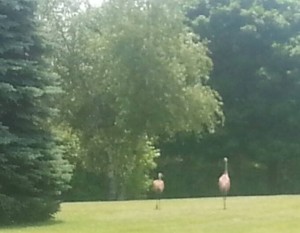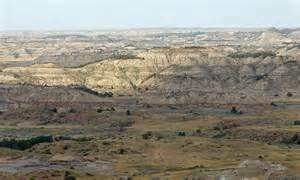Despite what the ground hog predicted (and apparently, there are many ground hogs around the country who are into meteorology), it is feeling a lot like spring in southern Wisconsin this week. Any time it gets in the neighborhood of 50 degrees, I think about getting out my walking shoes and resuming that which the doctor tells me I should have been doing all winter. But cold, dreary days are not conducive to walking when you’re a couch potato like I am. When winter closes in, I close in too, thankful that I no longer have to get into a cold car and head through the storms to work. I’m also thankful that my husband still does and seems to want to.
But this week, I did put on my walking shoes and as each day has passed, I have shed one piece of outerwear for my 3 mile walks. First went the scarf. Then I traded the Green Bay Packers stocking cap. I have to admit that I kind of hated to let that go – every time I put it on I feel like I’m standing next to Aaron Rodgers waiting to go in for the next offensive drive. Nonetheless, I traded the Packers stocking cap for a Walt Disney World baseball cap with Goofy all over it. That seems appropriate too for some reason. Maybe tomorrow I’ll be able to keep my gloves in my pockets.
But I have to keep my hands out of my pockets so that my left arm swings freely thus allowing my fitbit to accurately measure the steps I take. The default is 10,000 steps per day. And I have worked my way back up to the default in just a few days which is good news. I suppose the bad news is that I’m barely able to lift my feet by the time I get home and I ache so badly I kind of have to use the banister on the stairs to hoist myself up and down.
The odd thing is that by September of last year I was walking five miles a day and I felt really good. I just forgot how I had to work up to that. Maybe that’s why I so easily let the regimen fall away as the couch lured me back for the winter months ahead.
We live in a rural subdivision. Well, it was rural when we moved here. The city has moved out to meet us. Still, we have no sidewalks and no streetlights. Just asphalt streets and a lot of wide open spaces. There are days that I just enjoy the sounds of the birds singing. And today I rediscovered a sandhill crane couple whose acquaintance I made last summer. It was good to see my old friends again.
As I was walking, I was reminded of something Theodore Roosevelt observed as reported in “The Bully Pulpit” by Doris Kearns Goodwin.
In 1884, he was living at his Elkhorn Ranch house along the Little Missouri River in what was then Dakota Territory. Today it is western North Dakota. He had retreated there after the death of his wife Alice. The solitude of the prairie, its vast emptiness and few people to bother him helped him retreat into himself. It’s something he wanted to have happen and, in order to heal, perhaps needed to happen. He was deeply morose and had little interest in continuing his daily work and social forays that surrounded his home in New York.
He didn’t turn into a couch potato like I did over the winter. Goodwin says he was on horseback 16 hours a day. He worked the ranching life with a fervor, rounding up cattle and “branding beeves,” some of the hardest work there is on a ranch. He had the collegiality of hired men and partners as they hunted game and shared in the ranch work.
Roosevelt referred to his grief during those days and months of hard work. “Black care rarely sits behind a rider whose pace is fast enough,” he said. He didn’t want to think about his grief and in Dakota Territory he could outride it.
Now if you’ve been to the Dakotas, you know the vastness of that land. It seems folks either love it or hate it. I have long wondered, as my grandfather homesteaded western South Dakota in the early 1900s, how it was that my Grandmother Lord managed to make a life for herself, her four children and care for her husband in the midst of the heat and dust of the summer and the unforgiving snow and winds of the winter. Many folks lost their minds in the emptiness of the howling winds and miles and miles between neighbors. Those of us who live in the north country today complain about our winters, but with all of our amenities our complaints amount to nothing in the scheme of things.
Teddy Roosevelt took notice of the changes of seasons, the scenery, and the work around him. As I walked this week and thought of his story I was struck by the comfort he took in the blessings around him regardless of the season. But when spring came, “his morning rides took on ‘a charm of their own,’ the bleached landscape becoming ‘a vivid green, as the new grass sprouts and the trees and bushes thrust forth the young leaves.’ On those clear mornings, he thrilled to the sounds of ‘bird songs unknown in the East’ …. This quickening of life in the Badlands awakened a corresponding energy in Theodore Roosevelt.” [The Bully Pulpit, Doris Kearns Goodwin, Simon & Schuster, 2013]
It wasn’t long after that Roosevelt got his depression under control and made his way back to his New York home and a new life that would lead him to the presidency of the United States.
It is spring that brings a spring back into my own step after a semi-reclusive four months. I’ve begun to connect the songs with the identities of the birds who sing them. I delight in the snow as it melts and becomes a running stream through the culverts and ditches adjacent to my walk. I can hear the water running and, as odd as it may seem, the snow melting. I deliberately turn my face to the sun to soak up the rays that have been deprived me for too long. And while I am no Teddy Roosevelt, I can recognize the gifts of Creation surrounding me; the hints of green in the grass and the breezes blowing through trees which hold the promise of bursting buds into leaves. I look forward to smelling the dirt of freshly plowed ground and the essence of freshly mown grass.
“For everything there is a season,” the Scriptures say. “…a time to plant, and a time to pluck up what is planted….” (Ecclesiastes 3:1,2a)
The spring in my step may not be readily apparent to anyone who watches me as I reclaim the strength in my legs and my walk, but without a hard winter that opens into the promises of spring, I’m not sure how I could get that spring back into my step at all. When there’s newness in the air, it means newness in my life.
It’s amazing what the promise of new life can mean to an existence mired in gloom and self-absorption. The promise of spring. Lent.
Share here:


10 comments for “A spring in my step”